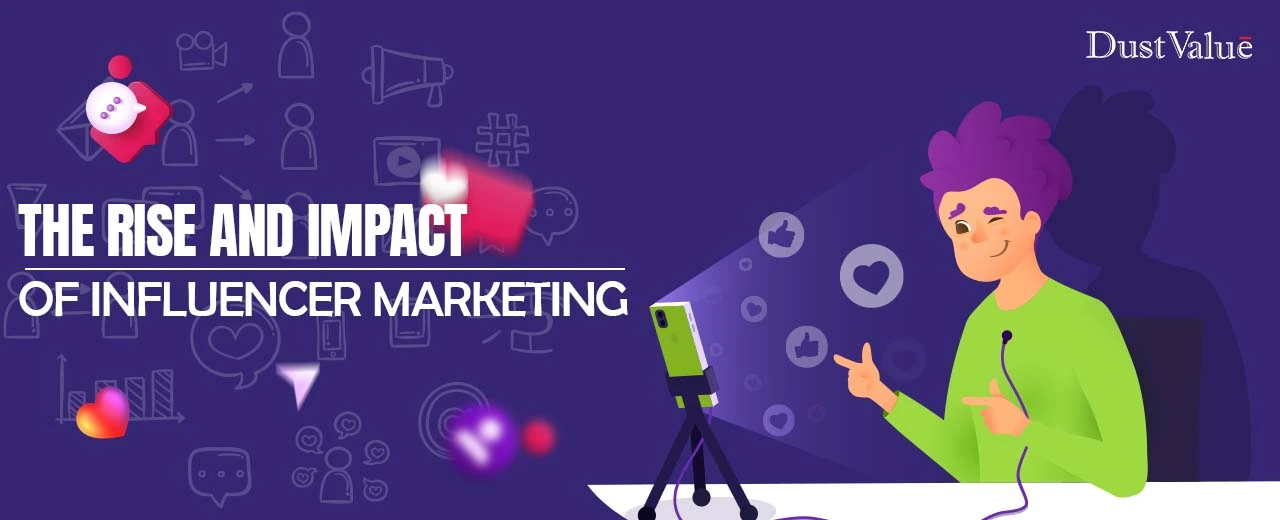THE RISE AND IMPACT OF INFLUENCER MARKETING
“THE BEST MARKETING, DOESN’T FEEL LIKE MARKETING”
-TOM FISHBURNE
Influencer marketing is the buzz word in the digital world, but often people ask the question How does it work? Let’s look at this exciting space, where we talk about the origins of influencer marketing, and what lies in store for the future!
The first known influencers were born on YouTube. Around 2005 the long and short formats of videos were gaining popularity all over the internet and this became a commercial opportunity. YouTubers started creating content around their hobbies and talents to monetize their efforts through the platform.
The rise of Instagram, Vine, and TikTok further legitimized “influencers” and made them popular like never before! More people started to share pictures and videos to become “viral”. After Vine was acquired and TikTok became limited to videos, Instagram turned into a so-called “Influencer Central” for people to connect seamlessly with their target audience through influencer posting.
Reasons Why Influencer Marketing Clicks:

Influencer marketing is considered a legitimate and mainstream marketing channel today. It is majorly because influencers serve as a direct link between companies and consumers. They show the usability and other aspects of a product in creative ways which convince potential buyers about its real value. Here are some interesting facts to better understand the workings of influencer marketing:
- 40% of consumers depend on influencer recommendations and 69% trust what influencers say and recommend.
- Influencers mostly carry a high sense of brand awareness and keep up with the latest trends, which makes their opinions matter.
- Influencer marketing proves to be profitable because it saves time, keeps things simple, and provides better affordability.
- Brands want to engage with customers and make real interactions, which makes influencer campaigns a popular choice as latter are often looking for band collaborations.
- Collective onboarding of influencers for campaigns expands the reach of the campaign exponentially through the amazing algorithms of Instagram, YouTube, X (former Twitter), and other such platforms
Whether it is DIY demos, live shopping experiences or a simple tutorial – influencers deliver experiences in a way that some brands might find it difficult to execute by themselves due to lack of resources.

Industries that benefit most from influencer marketing:
Influencers have proven their versatility and can be successfully implemented in a wide range of industries. Below are some of the industries where influencers are highly viable and can be utilized to their maximum extent.
In the IT and technology sectors, influencers can simplify complex concepts and engage tech-savvy audiences. For the recruitment industry, they can act as informative career guides. In the medical field, they can raise awareness about health issues.
In the BFSI (Banking, Financial Services, and Insurance) sector, they can promote financial literacy. In construction and real estate, they can showcase architectural designs and property listings.
Their adaptability and ability to personalize content make them a viable marketing tool for numerous industries.
Conclusion:
Influencer marketing is here to stay, as it has become to be the most effective form of digital marketing. From giveaways to social media takeovers, contests, sponsored blogs and posts, affiliate marketing and unboxing gifts, influencers reach people in the most effective ways. Here are some of the key categories of influencers as per the size of their followers:

Brands lay out clear guidelines as to how they want the influencers to present the product and what exactly the brand message should be. Basically, influencer marketing is a successful collaboration of ideas and execution between the influencer and the brand.
Follow us on Instagram @dust.value and get the best influencer marketing services!
